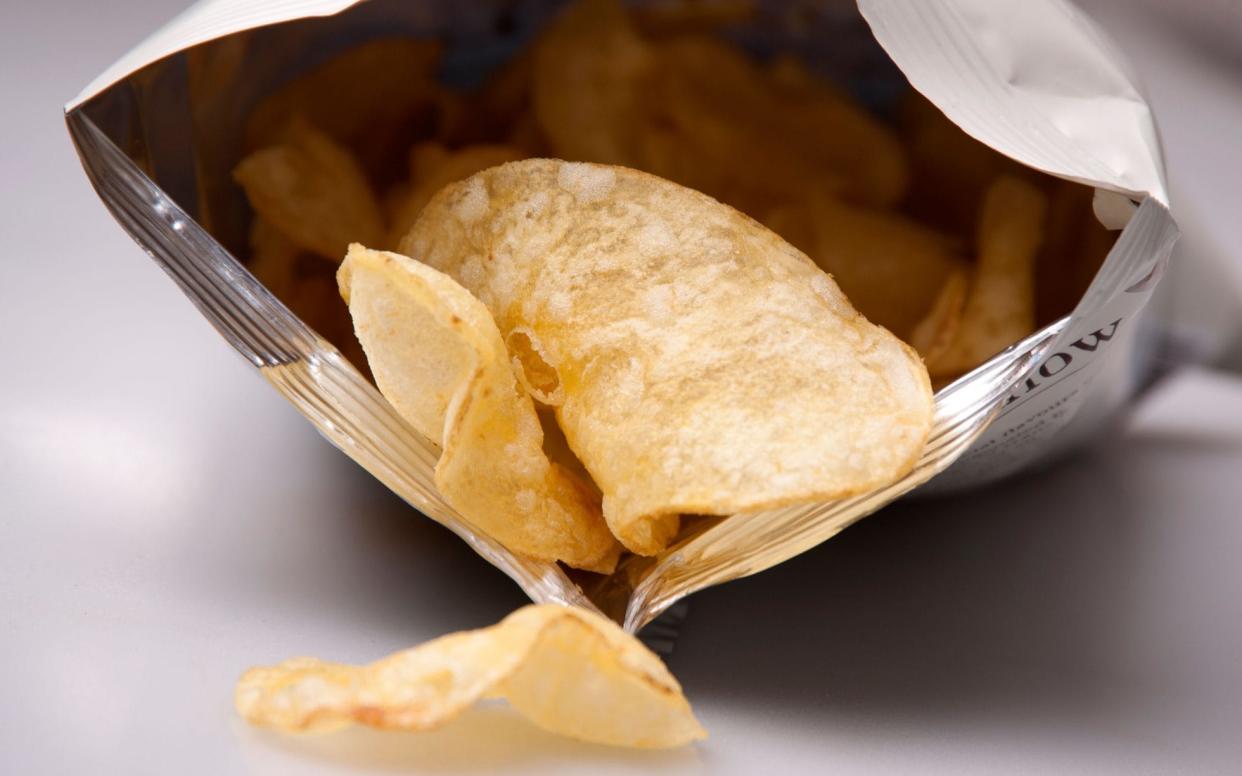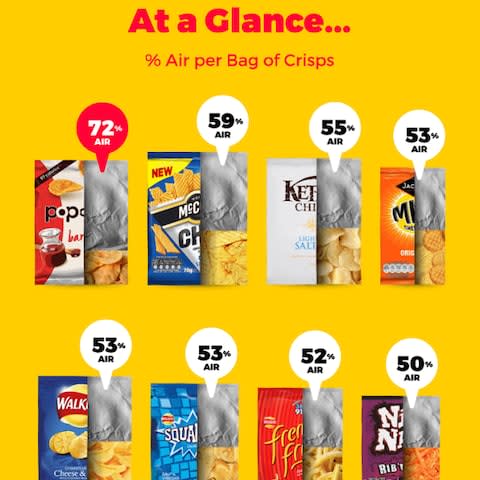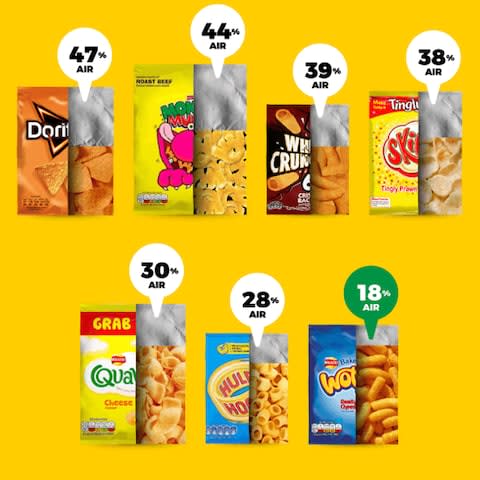Why do crisp packets have so much air in them?

The amount of air in crisp packets is a small gripe for many fans of the snack, but what's the science behind adding all that extra gas?
CDA Appliances said crisp connoisseurs can sometimes feel short-changed when they find “so few crisps in packets and why there is, seemingly, “so much air inside”.
Ooh got some crisp with my bag of air! @walkers_crispspic.twitter.com/BJZoisqX1n
— Ellie Smith (@EllieSmith947) September 15, 2017
@McCoys dear mcCoys can I have some crisps in my bag of air please pic.twitter.com/x6D34F8Vgr
— sheik (@sheikzelda7) September 16, 2017
They compared the amount of air in some of the nation’s favourite crisp brands and found it ranged dramatically from 18% to 72%.


So why is there so much air in crisps? It’s actually nitrogen, a tasteless and odourless gas, which helps keep the product fresh and helps stop the crisps from being damaged during transportation.
“It seems 42% of nitrogen is a good industry average for packaging and any more than that, you are losing out,” CDA concluded.
The Snack, Nut and Crisp Manufacturers Association (SNACMA) responded to the investigation, explaining: “Products manufactured by UK snack manufacturers are sold on a weight basis and are clearly marked as such.
“In order to retain the products’ freshness, a gas is sometimes inserted into the packet – this would be a natural component in air, typically nitrogen – giving the finished product a pillow-like appearance.
“In addition to preventing staleness, the inserted gas also provides the added benefit of creating a cushioning effect to protect the fragile contents of a packet from damage.”
They added: “The packaging expands or contracts depending on the ambient temperature, whereby the gas present in the pack will fill a larger volume when it’s hotter, and a smaller volume when it’s cooler. For this reason, the packaging is required to be of a certain size to accommodate the potential expansion of the gas.
“As all food products differ significantly in densities, size, shapes and fragilities, it is worth noting how packaging techniques and technologies vary to accommodate the contents while meeting the Packaging Essential Requirements and consumers’ needs.”

